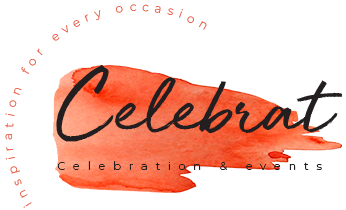What is Kwanzaa? – CBBC Newsround
To enjoy the CBBC Newsround website at its best you will need to have JavaScript turned on.
Lots of big celebrations and festivals take place in the last months of the year including Diwali, Hanukkah and Christmas, but have you ever heard of Kwanzaa?
Founded by activist and author Dr Maulana Karenga in 1966, Kwanzaa is a festival typically celebrated by African Americans from 26 December to 1 January.
The festival’s name comes from the phrase ‘matunda ya kwanza’, which means ‘first fruits’ in Swahili, a language spoken in a number of East African countries including Kenya, Uganda, Rwanda, Malawi, Burundi and Tanzania.
Kwanzaa is viewed as a celebration of life, and it’s a way for members of the African American community to come together and celebrate their roots and culture.
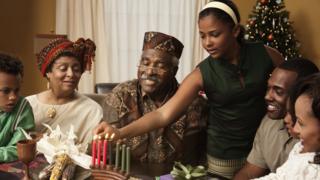 Getty Images
Getty Images
Why was Kwanzaa introduced?
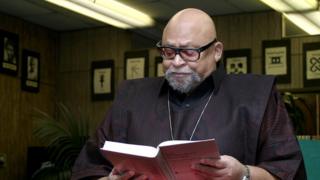 Getty Images
Getty Images
Activist and author Dr Maulana Karenga founded Kwanzaa in 1966
Dr Karenga founded Kwanzaa following the Watts Riots which took place in 1965.
At that time, Watts was a largely African American neighbourhood in Los Angeles, California where residents suffered from major racial inequalities. Violent confrontations took place between the Los Angeles police and African American residents living in the neighbourhood.
The riots were sparked by police officer Lee Minikus’ attempted arrest of a young black man called Marquette Frye for drink diving. The events surrounding the arrest got out of hand and the incident was followed by several days of unrest.
Around 1000 people were injured, with a further 34 losing their lives and there was more than $40 million worth of damage done to property during the riots.
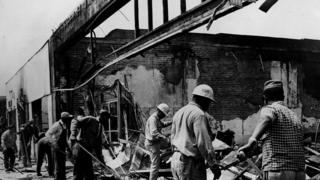 Getty Images
Getty Images
Many properties were damaged during the Watts riots
Dr Karenga was deeply affected by the negative impact of the riots and he wanted to find a way for the African American community to come together following the devastation.
In 1966 he introduced a non-religious holiday called Kwanzaa with the aim of giving black people an opportunity to celebrate their African history and culture.
Dr Karenga spent time looking into African harvest traditions and brought together parts of different celebrations to form what is today known as Kwanzaa.
How is Kwanzaa celebrated?
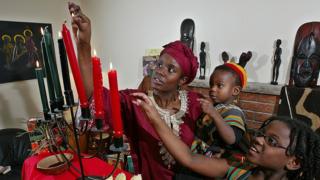 Getty Images
Getty Images
Seven candles are lit during the week of Kwanzaa
During Kwanzaa, families and communities come together to take part in activities based around seven key principles introduced by the festival’s founder. Each day of the celebration is dedicated to a different principle.
The festival also includes storytelling, lots of food which is shared among family and friends, singing, dancing, music including African drumming, gift giving and poetry readings.
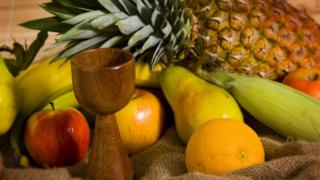 Getty Images
Getty Images
The seven symbols of Kwanzaa includes crops, ears of corn and the unity cup
Similar to Hanukkah, candles are lit during Kwanzaa. Seven candles are placed in a special candle holder known as a kinara, with three red candles on the left, three green candles on the right and a single black candle in the middle. Both the kinara and the seven candles (mishumaa saba) are two of the seven symbols of Kwanzaa along with crops (mazao), a place mat (mkeka), an ear of corn (muhindi), the unity cup (kikombe cha umoja) and gifts (zawadi).
During the seven-day festival, a candle is lit each day. The black candle in the centre is lit first, and then the remaining candles are lit from left to right throughout the course of the week.
What are the seven principles of Kwanzaa and what do they mean?
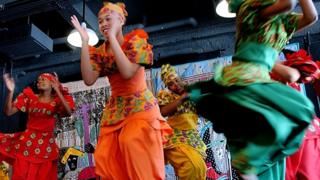 Getty Images
Getty Images
Kwanzaa celebrations often include African dancing
Kwanzaa is based around seven key principles or ideas which include:
Unity (Umoja) – This is focused on the importance of working towards and maintaining unity among family members, the African American community and the country.
Self-determination (Kujichagulia) – This highlights the importance of people defining themselves, naming themselves, creating for themselves and speaking for themselves.
Collective work and responsibility (Ujima) – This is all about building and maintaining the community and supporting others in solving their problems.
Cooperative economics (Ujamaa) – This principle focuses on the African American community creating and running shops and businesses they can profit from together.
Purpose (Nia) – This is all about the overall purpose of the African American community – to build and develop the people and restore them to greatness.
Creativity (Kuumba) – This principle focuses on people doing what they can to leave the community more beautiful and beneficial than that which they inherited.
Faith (Imani) – This is all about believing in others including parents, teachers, leaders, and the struggle of the African American people.
Sharing is caring 👌 don’t forget to share this post on Twitter !
